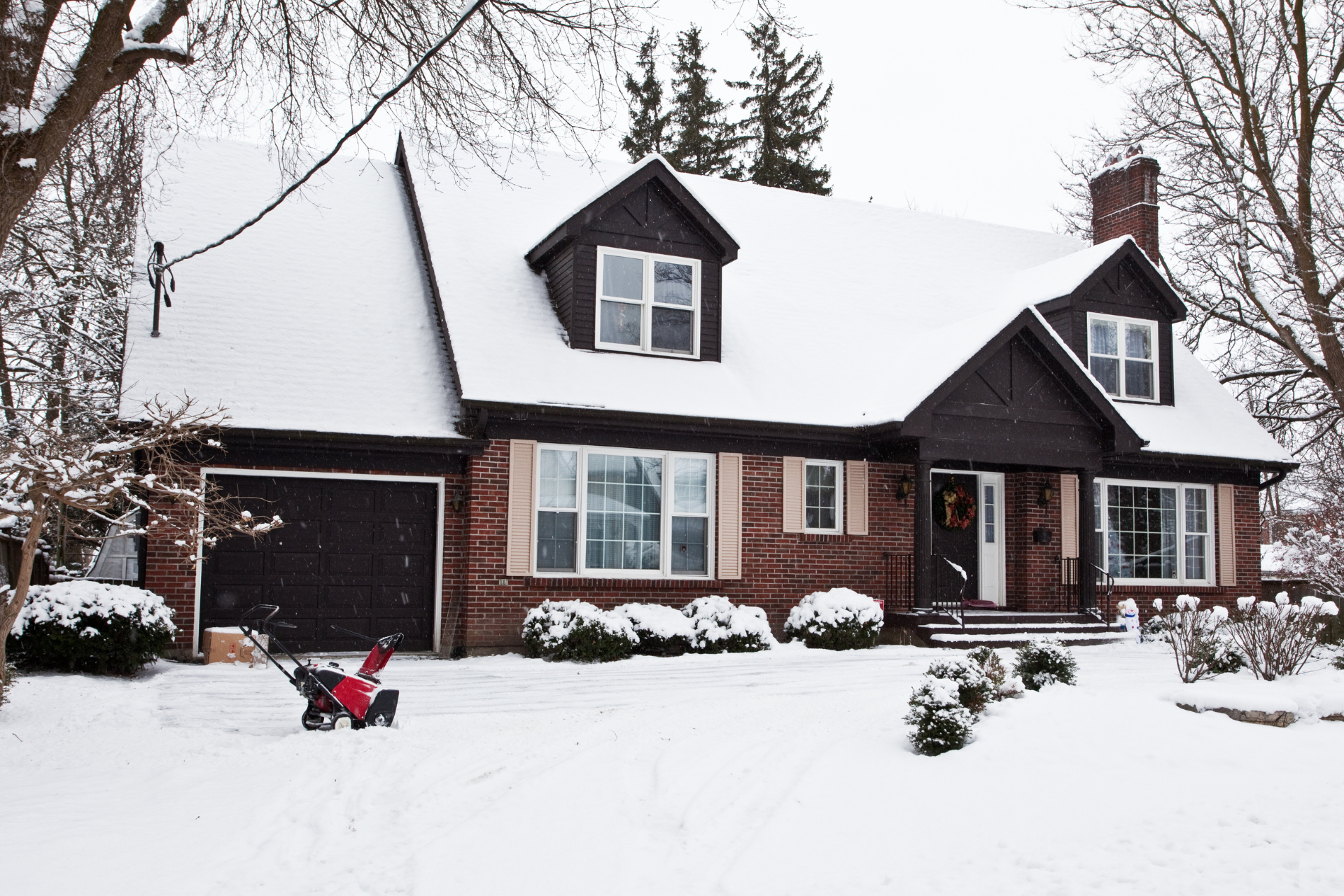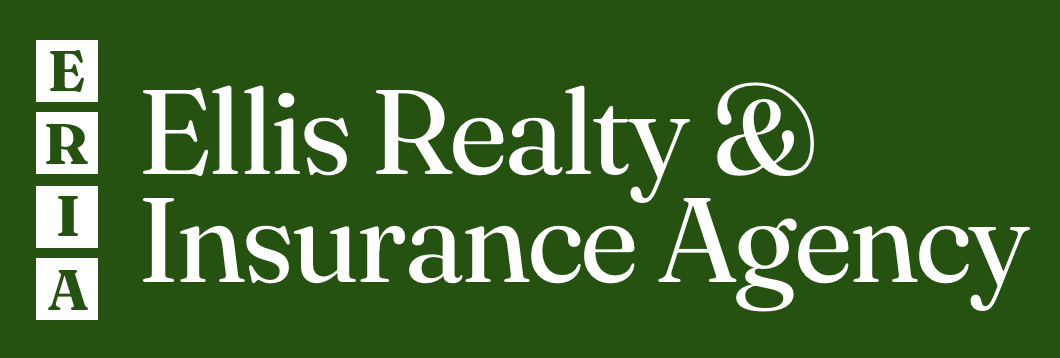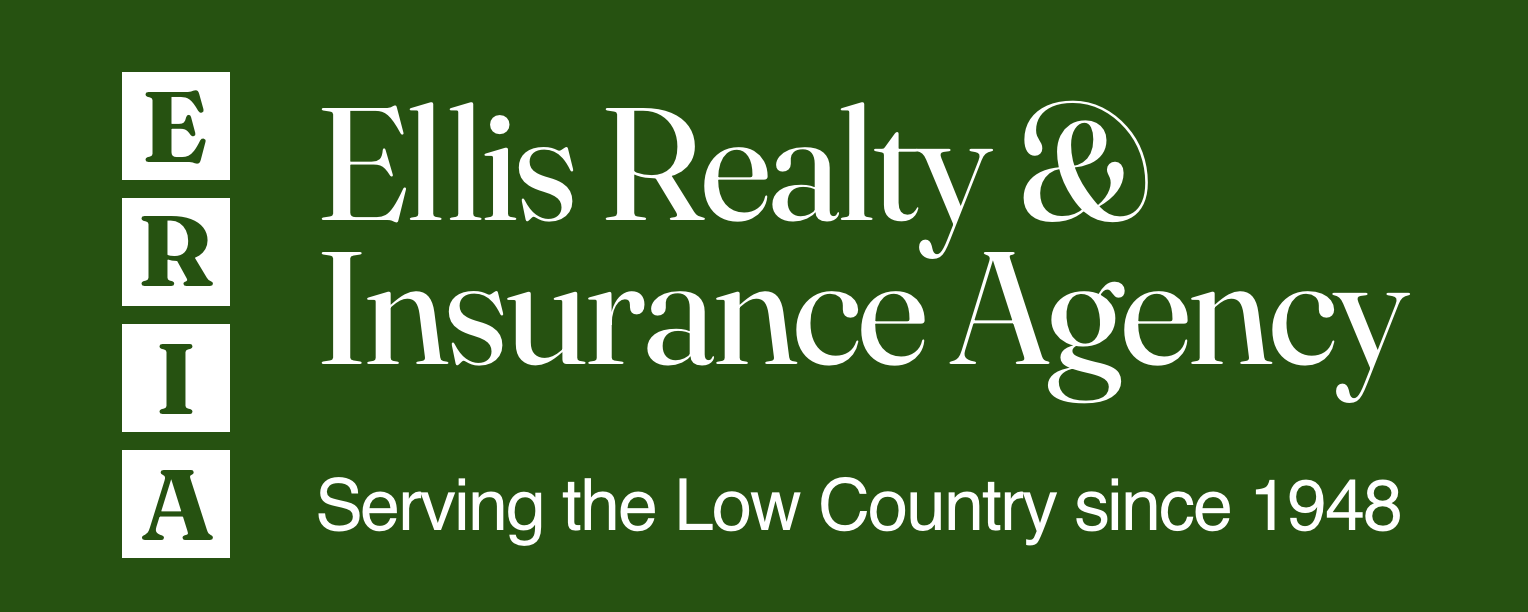Blog

06 Mar, 2024
At Ellis Realty & Insurance Agency, we recognize the journey to homeownership is filled with questions and learning opportunities, especially when it comes to understanding the appraisal process. To help demystify this crucial step, we've compiled a list of frequently asked questions to guide you through the nuances of home appraisals and how they fit into the mortgage process. What is a Home Appraisal? A home appraisal is an unbiased assessment of a property's fair market value, conducted by a licensed professional appraiser. This valuation is a standard requirement in the mortgage loan process, providing assurance to the lender that the property's purchase price is in line with its true value. How Does an Appraisal Differ from a Home Inspection? It's crucial to distinguish between a home appraisal and a home inspection. While an appraisal evaluates a property's market value, a home inspection examines its physical condition, including structure, construction, and mechanical systems. Appraisals are used by lenders to confirm a property's value, whereas inspection reports help buyers understand the home's condition and any necessary repairs. How Do Home Appraisals Work? Once a purchase agreement is in place, your lender will request an appraisal. The appraiser examines the property and compares it to similar, recently sold homes in the area, considering features, location, condition, and market trends to determine value. What Factors Influence a Home Appraisal? The appraised value is affected by various factors, including the home's square footage, condition, age, location, and any improvements or renovations. Structural issues or damages that could depreciate value are also taken into account. Why Are Appraisals Important in the Mortgage Process? Appraisals play a vital role in ensuring a fair transaction, protecting both buyer and lender from overpaying. If the appraisal comes in lower than the offer price, it can impact the loan amount offered by the lender. Conversely, a higher appraisal value may improve the loan-to-value ratio, potentially resulting in better loan terms. Understanding the appraisal process is a key component of navigating the path to homeownership. It not only secures a fair transaction but also provides peace of mind that you're making a sound investment. We hope this guide empowers you with the knowledge needed to confidently approach your real estate purchase. Should you have any more questions or require further clarification, we at Ellis Realty & Insurance Agency are here to assist you every step of the way in your homeownership journey.

14 Feb, 2024
As the crisp chill of winter sets in, it brings with it the potential for certain home-related challenges. At Ellis Realty & Insurance Agency, we understand the importance of keeping your home warm, cozy, and well-protected against the harsh winter weather. To help you prepare, we've compiled a list of essential tips to safeguard your home this winter season. Whether you're a seasoned homeowner or new to the responsibilities that come with it, these precautions are vital for maintaining a secure and energy-efficient living space. Seal the Drafts: Weatherstripping and Insulation One of the most effective ways to keep your home warm and reduce energy bills is by preventing cold air from sneaking in through gaps and cracks. Doors and windows are the usual culprits, allowing the warmth to escape and the chill to invade. Inspecting these areas and sealing them with weatherstripping or caulking can make a significant difference. For those who prefer a DIY approach, Lowes offers an excellent guide that can walk you through the process step by step. Enhance Window Insulation with Plastic-Film Kits If your home lacks double-pane or storm windows, plastic-film sheet kits are a temporary yet effective solution. These kits, available at your local hardware store, can significantly improve your home's energy efficiency and block cold drafts, all without the need for installing new windows. Designed for single-season use, they are an affordable and efficient way to keep the warmth in and the cold out. Keep Gutters Clear The accumulation of leaves, debris, and twigs in your gutters and downspouts can lead to clogging, preventing proper drainage. This can cause water to back up, potentially damaging your roof and leading to leaks. A clean gutter system is crucial for winter preparation, ensuring that water flows freely away from your home. Winterize Outdoor Faucets and Sprinklers Before the frost sets in, it's essential to disconnect hoses, drain pipes, and turn off the water supply to outdoor spigots. For those with in-ground sprinkler systems, having them professionally blown out to remove any remaining water can prevent pipe bursts. These steps are crucial in avoiding the costly repairs that come with frozen and burst pipes. Secure Your Home The longer nights of winter can unfortunately provide cover for potential intruders. Ensuring your home is well-lit, with outdoor lights and motion-sensor fixtures, can deter unwanted visitors. Additionally, a reliable home security system can provide peace of mind during the darker months. Regularly testing and maintaining these systems are key components of your winter prep routine. Fireplace and Chimney Safety For homes with wood-burning fireplaces, an annual inspection of the chimney and flue system is non-negotiable. This not only prevents chimney fires, which are a significant risk factor for residential fires each winter but also reduces the risk of carbon monoxide poisoning from blocked vents. Certified chimney sweeps can provide thorough inspections and cleaning, ensuring your fireplace is safe to use throughout the season. Preparing your home for winter doesn't have to be a daunting task. By taking these proactive steps, you can ensure your home remains a warm, cozy, and secure haven against the cold. Remember, Ellis Realty & Insurance Agency is here to assist with any questions or needs that may arise during these colder months. Feel free to share these tips with friends and family, and let's all stay warm and protected this winter.

22 Dec, 2023
Drones have become increasingly popular in recent years, revolutionizing various industries and offering exciting opportunities for enthusiasts. However, as a drone operator, it's crucial to understand the insurance and legal aspects associated with this technology. In this blog post, we will explore the key points every drone operator should know and emphasize the importance of contacting your insurance agent for guidance. 1. Understanding Drone Insurance: Operating a drone comes with inherent risks, including potential damage to property, injury to others, or even legal liabilities. Drone insurance provides coverage for these risks, ensuring you are protected financially. It's essential to have a comprehensive understanding of the different types of drone insurance available, such as liability insurance, hull insurance, and personal injury insurance. Consulting with your insurance agent will help you determine the coverage that best suits your needs. 2. Compliance with Regulations: Drone regulations vary from country to country and even within different regions. Familiarize yourself with the specific rules and regulations governing drone operations in your area. This includes obtaining the necessary licenses and certifications, adhering to flight restrictions, and maintaining a safe distance from people, buildings, and airports. Your insurance agent can provide guidance on the legal requirements and help you stay compliant. 3. Risk Management: As a responsible drone operator, it's crucial to prioritize risk management. This involves conducting regular maintenance checks on your drone, ensuring it is in optimal condition for safe operation. Additionally, consider implementing safety protocols, such as pre-flight checklists and emergency procedures. By proactively managing risks, you can minimize the likelihood of accidents and potential insurance claims. 4. Coverage Limitations: Understanding the limitations of your drone insurance coverage is essential. Some policies may exclude certain activities or locations, such as flying in restricted airspace or engaging in commercial operations. It's crucial to review your policy carefully and discuss any potential coverage gaps with your insurance agent. They can help you identify additional coverage options or tailor your policy to meet your specific needs. 5. Evolving Technology and Regulations: The drone industry is constantly evolving, with advancements in technology and changes in regulations. Staying informed about these developments is vital to ensure you are adequately protected. Your insurance agent can keep you updated on any changes in the industry and provide guidance on how they may impact your insurance coverage. Operating a drone can be an exciting and rewarding experience, but it's essential to approach it with caution and responsibility. By understanding the importance of drone insurance, complying with regulations, managing risks, and staying informed about industry changes, you can enjoy the benefits of drone operation while protecting yourself and others. Remember, your insurance agent is your best resource for answers to any questions or concerns you may have. Contact them today to ensure you have the right coverage for your drone operations.

16 Nov, 2023
As the vibrant hues of fall blanket the landscape and temperatures begin to dip, there's an unwelcome increase in deer activity on our roads. It’s a beautiful season, but the surge in deer movement poses a significant risk to motorists. That’s why it’s essential to be prepared as we navigate the roads this autumn. Did you know that approximately 1.5 million motor vehicle accidents in the U.S. are caused by deer? November, in particular, records the highest rate of these unfortunate collisions. With these statistics in mind, it’s crucial to equip ourselves with knowledge and precautions to stay safe during our travels. Stay Vigilant and Stay Safe Here are four essential tips to keep in mind as you embark on your fall journeys, especially during the times of day when deer are most active—dawn and dusk: 1. Stay Alert: Keep an eye out for deer crossing signs and remain vigilant for any movement along the roadside, particularly in wooded or grassy areas. Being attentive can provide those crucial extra seconds to react and avoid potential collisions. 2. Use High Beams Wisely: When there's no oncoming traffic, make use of your high-beam headlights. These lights can illuminate the eyes of deer on or near the roadway, offering additional time to respond and navigate safely. 3. Brake, Don’t Swerve: If you spot a deer in your path, resist the impulse to swerve abruptly. Instead, slow down and brake firmly. Swerving may confuse the deer and increase the risk of a severe collision with other vehicles on the road. 4. Expect More Deer: Deer are social animals and rarely travel alone. If you encounter one deer, there’s a high possibility that others might be nearby. Stay cautious even after the first sighting. Your Safety Matters Your safety is our priority. As an insurance agency dedicated to ensuring your well-being on the road, we’re here to offer guidance and support. Should you have any inquiries or require assistance, don’t hesitate to reach out. We’re committed to providing you with the resources and information necessary to navigate this beautiful season safely. As we embark on autumn adventures, let’s remember these tips and remain vigilant. Together, we can mitigate the risks associated with increased deer activity on our roads. Drive safe, stay aware, and embrace the beauty of fall with precaution and preparedness.

18 Oct, 2023
I trust this message finds you well. I'm reaching out to provide a comprehensive overview of the current state of the insurance industry, shedding light on the factors influencing the adjustments in premiums that have become increasingly noticeable in recent renewals. Across the board, consumers like you have encountered rising premiums—a challenge stemming from a confluence of industry-wide disruptions. Understanding these factors is crucial in making informed decisions about your coverage. Here are the primary drivers behind the surge in premiums: Rising Costs in Rebuilding and Repairs Higher Rebuilding Costs: The expense of reconstructing properties has surged significantly due to the escalating prices of materials and labor. This inflation in the supply chain directly impacts the cost of rebuilding your home, necessitating insurers to adjust rates accordingly. Increased Vehicle Repair Costs: Auto repairs have seen a staggering 20% surge, attributed to the rising costs of both auto parts and labor. Moreover, modern vehicles integrate advanced technological features, rendering repairs more intricate and expensive. Escalating Medical and Litigation Costs Elevated Medical Expenses: The exponential rise in healthcare costs continues unabated, particularly concerning bodily injury resulting from auto accidents, contributing significantly to insurance adjustments. Rising Litigation Costs: Legal proceedings have become increasingly expensive, surging by 30% in 2022 alone. The escalating costs of litigation significantly impact insurers, leading to adjustments in premiums. Increased Risk Factors More Frequent and Severe Accidents: Post-COVID, the frequency and severity of auto accidents have surged, leading to a notable increase in fatalities and overall accidents, impacting insurance rates. Higher Reinsurance Costs: Reinsurance, crucial for insurers to cushion against catastrophic losses, is approaching capacity in many markets, leading to unsustainable rising rates. Strategies to Navigate the Changing Landscape While navigating these shifts, there are proactive steps you can take to manage the impact on your insurance premiums: Consider Higher Deductibles: Evaluating higher deductibles might be beneficial in certain situations. Let's discuss if this aligns with your specific needs. Maintain Active Coverage: Avoid policy lapses, as reinstating coverage has become more stringent. Ensure timely premium payments to prevent potential policy cancellations. Value Policy Tenure: Consistency with a carrier can be advantageous in the long run. Frequent switches or excessive claims could impact future coverage options. Manage Claims Wisely: Absorbing minor claims when feasible and preparing for catastrophic losses can positively influence coverage rates. Understanding these dynamics is crucial in making informed decisions about your coverage. I am available to discuss these factors further or assist with any related queries you might have. Your peace of mind and satisfaction remain our utmost priority.

07 Sep, 2023
When it comes to safeguarding your family's financial future, the world of life insurance can seem complex. One common query that often arises is understanding the distinctions between term life and whole life insurance. Let's delve into these two fundamental types of coverage to help you navigate this critical decision. Term Life Insurance: Protection for a Defined Period Term life insurance is akin to safeguarding your loved ones for a specific period—a term. In the unfortunate event of your passing during this period, it pays out a predetermined amount to your beneficiaries. However, if you outlive the term, the coverage concludes, and there's no payout. Whole Life Insurance: Lifelong Coverage with Added Benefits In contrast, whole life insurance extends coverage for your entire lifetime, provided premiums are consistently paid. It's a more intricate policy, with a portion of your premiums accumulating in a tax-advantaged account. Over time, this cash value grows, granting you options like borrowing against it, surrendering the policy for cash, or letting it continue to accrue. Understanding the Key Differences The disparities between these insurance types primarily revolve around duration, cash value, and cost: Duration: Term life policies typically span 10 to 30 years or until a specific age, while whole life persists throughout your life. Cash Value: Term life insurance lacks cash value, while whole life policies offer a living benefit through their accumulated cash value, often utilized as an investment due to its reliable returns and tax advantages. Cost: Term life premiums are generally more economical than whole life. For instance, a healthy 30-year-old male might pay $358 annually for a $500,000 term life policy, while a comparable whole life policy might cost around $4,308 yearly. Making the Choice Cost often serves as the decisive factor for many individuals, leading them to opt for term life insurance. However, others prioritize the living benefits and long-term security provided by whole life policies. Choosing the right life insurance can be overwhelming, given its implications for your family's future. I'm here to simplify this process for you. Feel free to reply to this email or give me a call, and I'll gladly assess your unique situation, offering tailored recommendations for you and your family's peace of mind.
Check out our Blog
Find clarity on real estate and insurance options.

